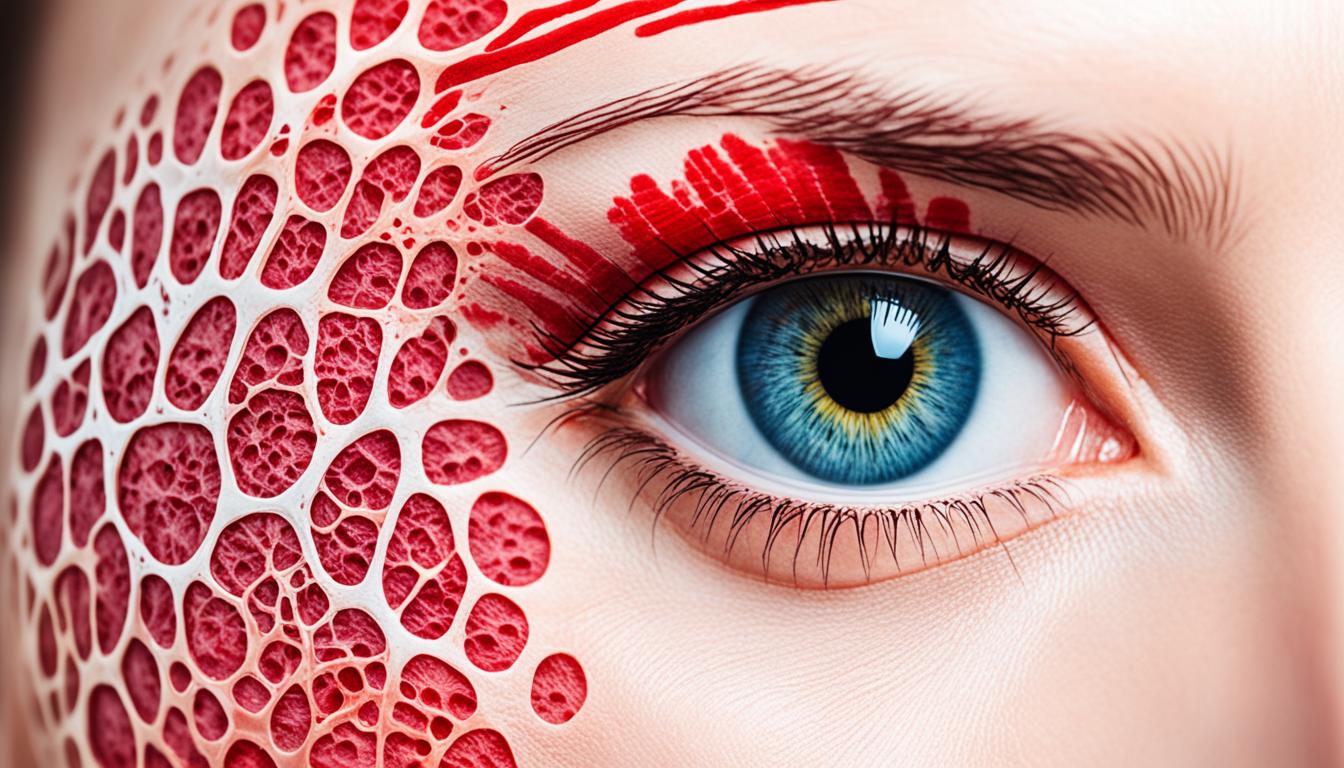Dermatographia, also called dermatographism, leads to skin reacting strongly to scratching or stroking. Many young adults experience it, but it can affect anyone at any age. This skin condition is not linked to any specific race or gender.
The exact cause of dermatographia is unknown. It’s thought that when the skin is scratched, it releases an antigen. This leads to the release of histamine and causes the skin to flush red and swell.
Dermatographia comes in several forms, such as immediate dermographism and delayed dermographism. Making a diagnosis often involves a reaction test. For treatment, wearing loose clothes and avoiding triggers can help. Antihistamines are used for more specific management.
Stem cell therapy is now being looked into for treating dermatographia.
Key Takeaways:
- It is a condition where skin reacts severely to being scratched or stroked.
- It is a common form of skin reaction disorder.
- Its exact cause is not known but linked to skin trauma.
- Treatment includes general steps and specific medications like antihistamines.
- Stem cell therapy is a hopeful new treatment for dermatographia.
Symptoms and Diagnosis of Dermatographia (Dermatographism)
People with dermatographia can have various symptoms. It depends on their condition’s type and how severe it is. The most common type, immediate dermographism, shows redness, swelling, and itching very quickly after skin is stroked or scratched. These signs fade within an hour.
In some, symptoms last longer and are worse, called symptomatic dermographism. It makes people itch more and for longer, which can really affect their daily lives. Feeling tired and having trouble sleeping are common. Notably, dermatographia can also affect body parts like the lips and vulva.
Diagnosis of Dermatographia
Doctors diagnose dermatographia mainly by how the skin reacts when it’s stroked. They might use a blunt object to stroke the skin during an exam. Seeing redness, swelling, and itching where the skin was stroked is a big clue.
In other cases, doctors might do more tests. This is to make sure no other skin problem is present. Tests can include checking blood for histamine, taking a skin sample to look at under a microscope, or applying allergens to the skin to see reactions.
Getting a formal diagnosis for dermatographia is crucial. It helps rule out other problems causing similar symptoms.
| Symptoms | Diagnostic Tests |
|---|---|
| Red flare and swelling along the line of the stroke | Physical examination |
| Itching and discomfort | Histamine blood test |
| Symptoms affecting mucous membranes | Skin biopsy |
| Allergen patch testing |
Causes and Treatment of Dermatographia (Dermatographism)
The exact cause of dermatographia is not completely known. It may start when the skin is hurt, causing an unknown substance to make the skin react. This reaction includes the skin giving off histamine and other things that can make the skin red and itchy.
This condition can happen on its own or because of things like scabies or some medicines. Some people think it might be connected to atopy, but that’s not proven yet.
To treat dermatographia, it’s important to lessen the symptoms and avoid what makes them worse. Wearing loose clothes and not scratching too much can help. Doctors might also give you modern antihistamines, which are less likely to make you drowsy or have side effects.
Stem cell therapy is a newer way to potentially help with this condition. Stem cells can help repair the skin and change the way the body reacts to things that cause redness and itching. Although scientists are still looking into this, it could be a very good treatment option in the future.

